Boeing 747-3B5 Korean Air[HL7469](Special Celebration of the 80th Anniversary of the National Day of the Republic of Korea)
Today is the National Day of the Republic of Korea and to celebrate the occasion I made this....
About Boeing 747
The Boeing 747 is a long-range wide-body airliner designed and manufactured by Boeing Commercial Airplanes in the United States between 1968 and 2023. After the introduction of the 707 in October 1958, Pan Am wanted a jet 2+1⁄2 times its size, to reduce its seat cost by 30%. In 1965, Joe Sutter left the 737 development program to design the 747. In April 1966, Pan Am ordered 25 Boeing 747-100 aircraft, and in late 1966, Pratt & Whitney agreed to develop the JT9D engine, a high-bypass turbofan. On September 30, 1968, the first 747 was rolled out of the custom-built Everett Plant, the world's largest building by volume. The 747's first flight took place on February 9, 1969, and the 747 was certified in later in December. It entered service with Pan Am on January 22, 1970. The 747 was the first airplane called a "Jumbo Jet" as the first wide-body airliner.
The 747 is a four-engined jet aircraft, initially powered by Pratt & Whitney JT9D turbofan engines, then General Electric CF6 and Rolls-Royce RB211 engines for the original variants. With a ten-abreast economy seating, it typically accommodates 366 passengers in three travel classes. It has a pronounced 37.5° wing sweep, allowing a Mach 0.85 (490 kn; 900 km/h) cruise speed, and its heavy weight is supported by four main landing gear legs, each with a four-wheel bogie. The partial double-deck aircraft was designed with a raised cockpit so it could be converted to a freighter airplane by installing a front cargo door, as it was initially thought that it would eventually be superseded by supersonic transports.
Boeing introduced the -200 in 1971, with uprated engines for a heavier maximum takeoff weight (MTOW) of 833,000 pounds (378 t) from the initial 735,000 pounds (333 t), increasing the maximum range from 4,620 to 6,560 nautical miles [nmi] (8,560 to 12,150 km; 5,320 to 7,550 mi). It was shortened for the longer-range 747SP in 1976, and the 747-300 followed in 1983 with a stretched upper deck for up to 400 seats in three classes. The heavier 747-400 with improved RB211 and CF6 engines or the new PW4000 engine (the JT9D successor), and a two-crew glass cockpit, was introduced in 1989 and is the most common variant. After several studies, the stretched 747-8 was launched on November 14, 2005, using the General Electric GEnx engine first developed for the 787 Dreamliner (the inspiration for the -8 in the name), and was first delivered in October 2011. The 747 is the basis for several government and military variants, such as the VC-25 (Air Force One), E-4 Emergency Airborne Command Post, Shuttle Carrier Aircraft, and some experimental test aircraft such as the YAL-1 and SOFIA airborne observatory.
Initial competition came from the smaller trijet widebodies: the Lockheed L-1011 (introduced in 1972), McDonnell Douglas DC-10 (1971) and later MD-11 (1990). Airbus competed with later variants with the heaviest versions of the A340 until surpassing the 747 in size with the A380, delivered between 2007 and 2021. Freighter variants of the 747 remain popular with cargo airlines. The final 747 was delivered to Atlas Air in January 2023 after a 54-year production run, with 1,574 aircraft built. As of August 2025, 64 Boeing 747s (4.1%) have been lost in accidents and incidents, in which a total of 3,746 people have died.

An Iberia Boeing 747-200

A Lufthansa Boeing 747-8I
About the 747-300 variant
The 747-300 features a 23-foot-4-inch-longer (7.11 m) upper deck than the -200. The stretched upper deck (SUD) has two emergency exit doors and is the most visible difference between the -300 and previous models. After being made standard on the 747-300, the SUD was offered as a retrofit, and as an option to earlier variants still in-production. An example for a retrofit were two UTA -200 Combis being converted in 1986, and an example for the option were two brand-new JAL -100 aircraft (designated -100BSR SUD), the first of which was delivered on March 24, 1986.
The 747-300 introduced a new straight stairway to the upper deck, instead of a spiral staircase on earlier variants, which creates room above and below for more seats. Minor aerodynamic changes allowed the -300's cruise speed to reach Mach 0.85 compared with Mach 0.84 on the -200 and -100 models, while retaining the same takeoff weight. The -300 could be equipped with the same Pratt & Whitney and Rolls-Royce powerplants as on the -200, as well as updated General Electric CF6-80C2B1 engines.
Swissair placed the first order for the 747-300 on June 11, 1980. The variant revived the 747-300 designation, which had been previously used on a design study that did not reach production. The 747-300 first flew on October 5, 1982, and the type's first delivery went to Swissair on March 23, 1983. In 1982, its unit cost was US$83M (270.4M today). Besides the passenger model, two other versions (-300M, -300SR) were produced. The 747-300M features cargo capacity on the rear portion of the main deck, similar to the -200M, but with the stretched upper deck it can carry more passengers. The 747-300SR, a short range, high-capacity domestic model, was produced for Japanese markets with a maximum seating for 584. No production freighter version of the 747-300 was built, but Boeing began modifications of used passenger -300 models into freighters in 2000.
A total of 81 747-300 series aircraft were delivered, 56 for passenger use, 21 -300M and 4 -300SR versions. In 1985, just two years after the -300 entered service, the type was superseded by the announcement of the more advanced 747-400. The last 747-300 was delivered in September 1990 to Sabena. While some -300 customers continued operating the type, several large carriers replaced their 747-300s with 747-400s. Air France, Air India, Japan Airlines, Pakistan International Airlines, and Qantas were some of the last major carriers to operate the 747-300. On December 29, 2008, Qantas flew its last scheduled 747-300 service, operating from Melbourne to Los Angeles via Auckland. In July 2015, Pakistan International Airlines retired their final 747-300 after 30 years of service. Mahan Air was the last passenger operator of the Boeing 747-300. In 2022, their last 747-300M was leased by Emtrasur Cargo. The 747-300M was later seized by the US Department of Justice in 2024.

A Japan Airlines Boeing 747-300 in "The arc of the sun" livery

A Varig Boeing 747-300
About Korean Air:National airline of Korea

Korean Air Lines Co., Ltd. (KAL; Korean: 주식회사 대한항공) is the flag carrier of South Korea and its largest airline based on fleet size, international destinations, and international flights. It is owned by the Hanjin Group.
The present-day Korean Air traces its history to March 1, 1969, when the Hanjin group acquired government-owned Korean Air Lines, which had operated since June 1962. Korean Air is a founding member of SkyTeam alliance and SkyTeam Cargo. As of 2024, it is one of the 10 airlines ranked 5-star airline by Skytrax, and the top 20 airlines in the world in terms of passengers carried and is also one of the top-ranked international cargo airlines.
Korean Air's international passenger division and related subsidiary cargo division together serve 126 cities in 44 countries. Its domestic division serves 13 destinations. The airline's global headquarters is located in Seoul, South Korea. The airline had approximately 20,540 employees as of December 2014.
The airline was, around 1999, known as "an industry pariah, notorious for fatal crashes" due to its poor safety record and a large number of incidents and accidents. The airline's reputation has significantly improved by 2009 as it has focused investment on improving its safety record including by hiring consultants from Boeing and Delta Air Lines.
In November 2020, it was announced that Korean Air would merge with competitor Asiana Airlines, but was switched to only acquire a major stake after the original merger plan was blocked by the United States Department of Justice for monopoly concerns. The acquisition was completed on December 12, 2024.

A Korean Air B777-300ER with new livery

Korean Air received its first A380 in 2011
History of HL7469
HERE
Credit
Aviationguy24 for the 747-300
GalacticaAsia for the tail logo
By the compassion of Buddha Shakyamuni, please do not repost this post under the title "flight 801" I beg you.
끝입니다. 즐기세요!

Specifications
Spotlights
- Cellado 3 months ago
- N908QD 3 months ago
- BluesynVN 3 months ago
- bilibiliwhatpurpleZSYA 3 months ago
General Characteristics
- Predecessor Boeing 747-300
- Created On Windows
- Wingspan 206.8ft (63.0m)
- Length 232.0ft (70.7m)
- Height 65.6ft (20.0m)
- Empty Weight N/A
- Loaded Weight 137,428lbs (62,336kg)
Performance
- Power/Weight Ratio 0.574
- Horse Power/Weight Ratio 0.087
- Wing Loading 19.1lbs/ft2 (93.2kg/m2)
- Wing Area 7,197.3ft2 (668.7m2)
- Drag Points 31623
Parts
- Number of Parts 735
- Control Surfaces 9
- Performance Cost 3,839

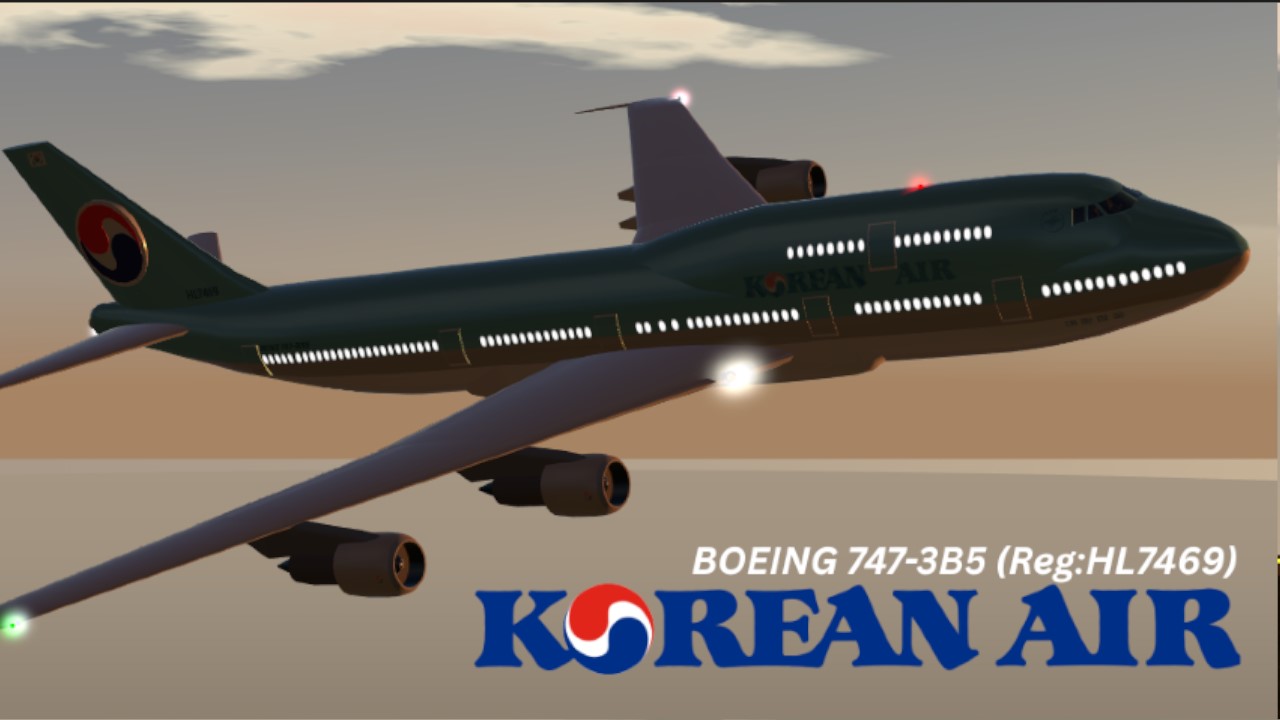
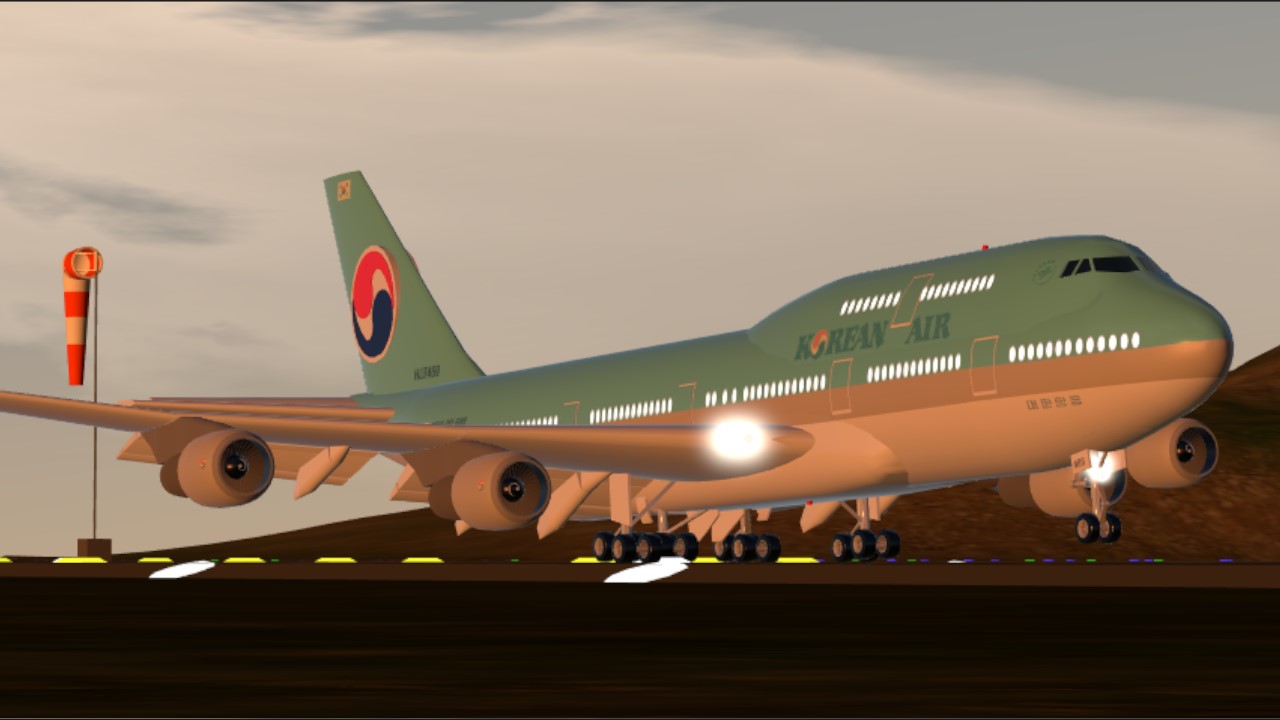
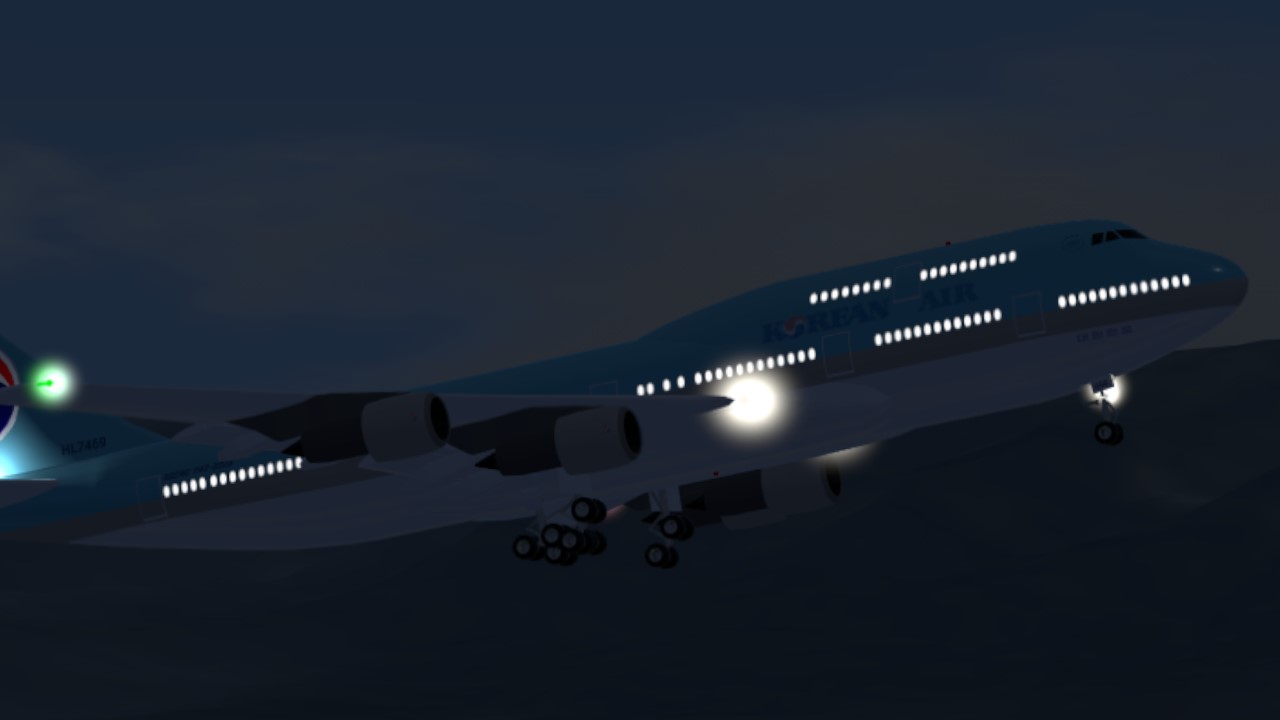
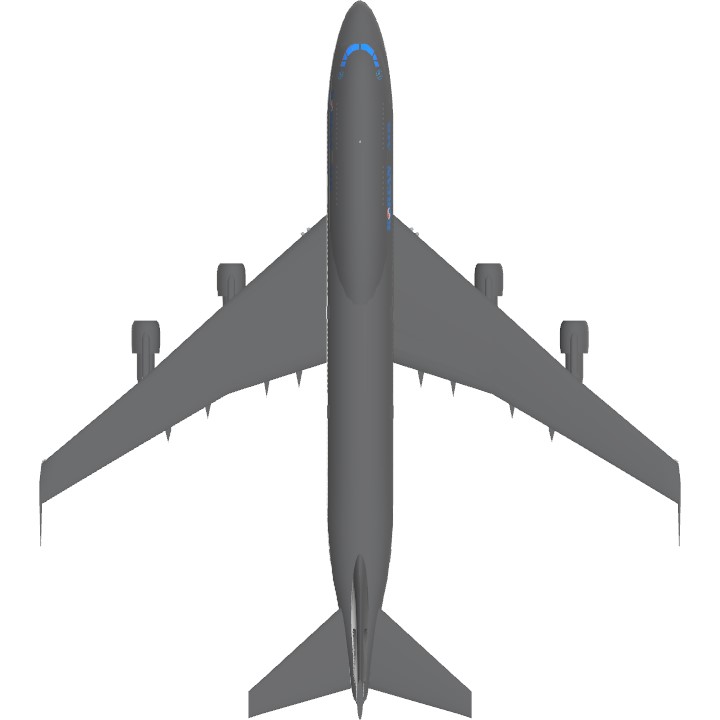
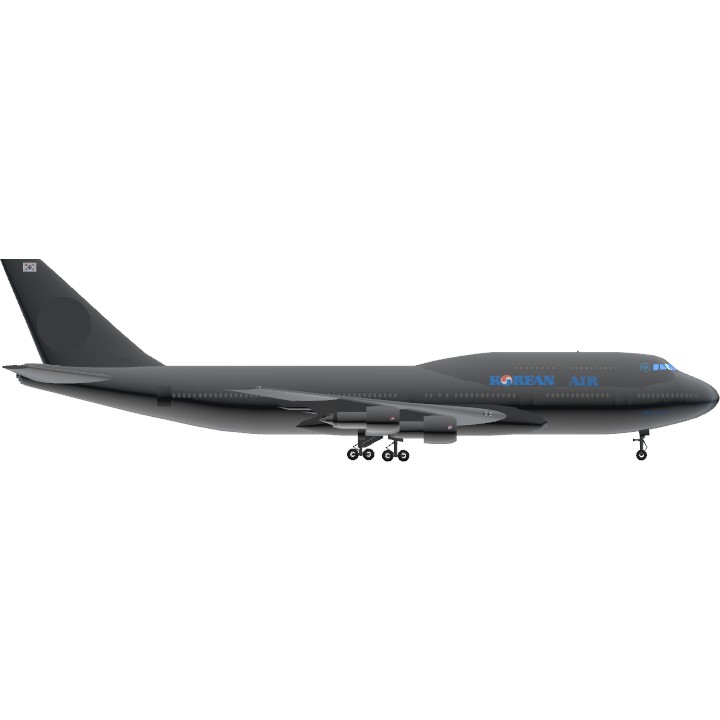
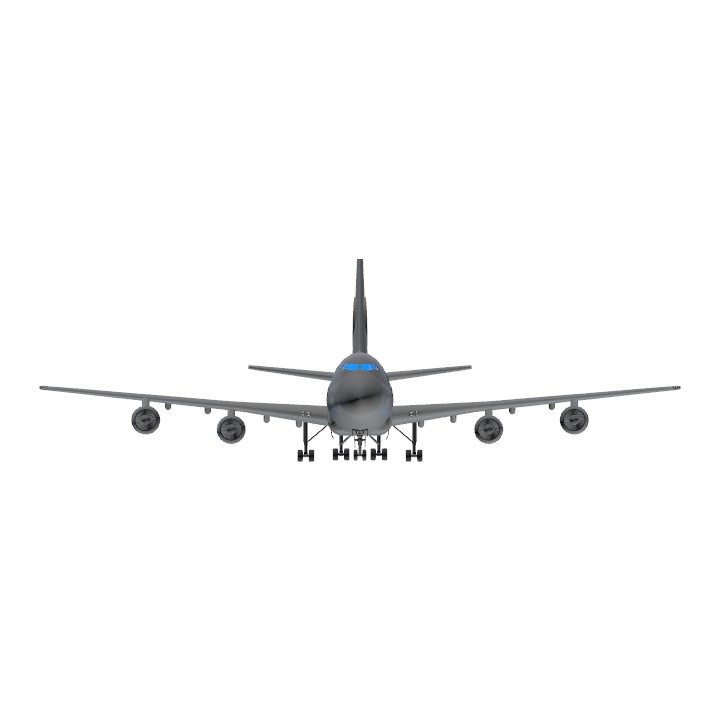
👍